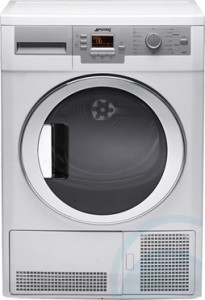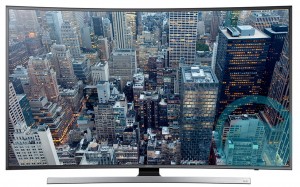What is a Smart TV and 7 other commonly asked appliance questions
May 15th, 2015
On any given day, hundreds of visitors to the Appliances Online website ask us appliance-related questions.
These questions can range from the probing “What is the best vacuum cleaner?” to the less testing “How many doors does a double-door fridge have?”
Let’s reveal the most popular appliance questions in Australia:
1. What is a Smart TV?
So what is a smart TV?
Like the smartphone did for the mobile phone, a smart TV is any television that allows users to connect to the Internet as well as run apps.
While there are no standards or regulations for defining what a smart TV is, the majority of models in this category allow you to connect the TV to the internet through either a wired Ethernet or wi-fi connection.
To continue the smartphone comparison, most smart TVs allow users to store media (photos, audio and videos), play games, use apps, and watch TV/movies on-demand.
A smart TV will also update its own software if the manufacturer uploads a software update.
This may improve performance or even fix a bug – Speaking of which, a smart TV will run into similar problems as a computer or a smartphone. Particular apps may freeze or hang the TV, and a bug or glitch may cause the TV to turn off. In other words, all the familiar issues of a malfunctioning computer or smartphone can also occur to smart TVs.
For more information on smart TVs, please check out our Appliances Online Smart TV Guide.
2. What size air conditioner do I need?
- What size air conditioner do I need for my room?
- What size air con unit do I need?
- What size split system?
- What size split system air conditioner do I need?
- Where size AC do I need for my bedroom?
This is just a small sample of the questions we receive about air conditioner size.
The answer is simpler than you think:
“How big is the area that you need to cool?”
Once you have worked this out (using the length and width of the of the room you want cooled e.g. 10m x 4m = 40m2), you can calculate what air conditioner strength you need by using the following ratio:
1.0-1.5 kW per 10m2
With a 40m2 room this means we need an air conditioner with 4.0 – 6.0 kW output.
See the Appliances Online Air Conditioner Buying Guide to find out how to buy the right air conditioner.
3. What is a condenser dryer?

A condenser dryer is a type of clothes dryer that does not require venting.
Instead of blowing hot air onto clothes, condenser dryers extract moisture from the material and drain it away as condensed water.
The key benefit of a condenser dryer is no hot air is blown out of the dryer, meaning it does not need to be installed in a well-ventilated room.
The main disadvantage is it is usually too heavy to be wall mounted.
There’s also a subtype of condenser dryers, called heat-pump dryers.
Heat-pump dryers not only extract the dampness out of wet laundry but additionally they recycle the heat created during this process, resulting in the most energy efficient dryers on the market.
Here’s our dryer expert Colin Jones explaining the different types of dryers.
For more information on condenser dryers, please see our condenser dryer buying guide.
4. What is a PVR?

PVR stands for personal video recorder and is the more advanced version of the classic VCR.
Instead of recording programs on analog video cassette tapes, PVR digitally records TV and other programs onto a hard disk.
Recorded programs can then be played back at the viewer’s leisure.
More expensive PVRs, have more functionality. Some allow users to schedule programs to be recorded in advance while others even allow the recording of multiple programs simultaneously. These models also enable you to record one program while displaying a completely different program through the use of multiple digital tuners.
Interestingly, as smart TVs continue to evolve, some TVs now include built-in PVRs, greatly simplifying the user experience as only one remote and one power socket is required.
Note: PVRs are also commonly called DVRs (Digital Video Recorders)
If you’re interested in how PVRs allow you to record two programs at once or allow for one program to be shown while a different program is recorded, see this article on Panasonic PVRs.
5. What is induction cooking?
Induction cooking is a form of cooking which heats up cookware through magnetic induction.
Unlike a gas cooktop, it does not produce a flame.
Unlike a standard electric cooktop, the cooktop is not heated up.
Instead, induction cooktops cut out the middleman and heat the cookware itself through electromagnetism. This results in more evenly heated food and cooler cooktops.
However this is also the source of its one slight drawback. As the cookware itself is heated up, the cookware must be a ferrous material – steel or iron. Materials like aluminium or pyrex will not be heated via an induction cooktop.
Here’s our appliance expert Colin Jones explaining the in’s and outs of induction cooktops:
6. What is a pyrolytic oven?
A pyrolytic oven is an oven that is able to “self-clean” through the process of pyrolysis.
Pyrolysis involves safely heating the inside of the oven to an extremely high temperate (500oC+) to turn any remaining food and oil residue into ash.
This ash is then easily wiped away, without any scrubbing or exposure to chemical cleaning agents.
Pyrolytic = Self-Cleaning
This is all you need to remember when someone mentions a pyrolytic oven – okay that’s not quite true. Based on our search logs, it appears that pyrolytic oven is commonly misspelled as PYROLITIC oven. Remember folks, it’s pyrolytic with a Y not with an I.
7. What is a proving drawer?
A proving drawer is typically used to store dough in a temperate-controlled environment in order to help bread rise.
It offers two main advantages:
1) Temperate control versus storing at room temperate, which may be unstable or fluctuating.
2) May help dough rise much faster than at room temperate, therefore speeding up the baking process.
8. What do “recess dimensions” mean?
The recess dimension is the shelf or space that the appliance needs to fit into.
The below image from a Chef EOC614 Oven manual shows the recess dimensions (A,B and C) for an underbench electric oven.
So remember, an oven, cooktop or fridge will not only have its actual dimensions but also its recess dimensions, which will be slightly longer, wider and higher than the actual dimension so it can fit properly.
The 8 most common appliance questions
There you have it, these are Appliances Online’s eight most commonly asked appliance questions and answers.
If you have any additional questions, please feel free to contact us:
1) Via our Q+A page
2) Toll free on 1300 000 500
3) Chat to one of livechat specialists
4) Leave a question in the comments section or on our Facebook page
Appendix: What is the best vacuum cleaner?
Ah, a very tough question.
The best vacuum cleaner will be different depending on your personal circumstances.
Factors to consider when buying a vacuum cleaner.
- Bag or bagless – bag vacuums allow for hygienic disposal and generally go longer without needing to be emptied. Bagless vacuums free you from having to buy replacement vacuum bags.
- Filter – some vacuums have HEPA filters which trap very fine particles (e.g. dust mite faeces or pollen) and therefore help allergy or asthma sufferers.
- Size of your property – a larger property would prefer a more powerful upright vacuum while a smaller premises would suit the more compact and easier to store barrel vacuum.
- Noise level – often overlooked is the loudness of a vacuum, particularly if you have light sleepers or afternoon nappers!
- Manoeuvrability – how does the vacuum swivel? 360 degrees? Does it have a long enough power cord?
- Budget – vacuums on Appliances Online range from handheld vacuums under $100 to robotic vacuums over $1,000.




Leave a Reply